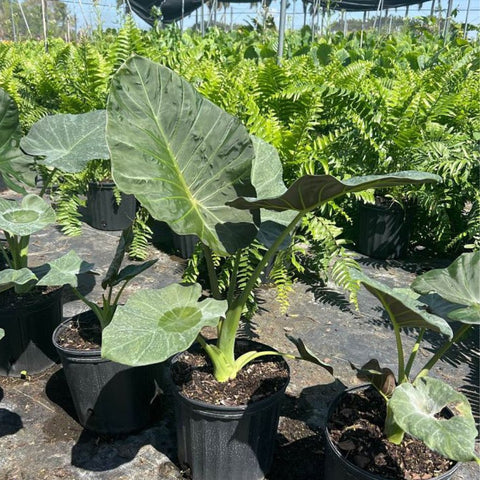I. Introduction: Preparing for a Bountiful Spring
The promise of a thriving garden begins with smart winter preparations. As the frost recedes and the days lengthen, gardeners everywhere feel the pull to get their hands in the soil. However, the secret to lush, colorful blooms and abundant produce in the springtime does not rest solely with planting alone—it starts with how you nurture your soil in the months leading up to it. Fertilizing your garden before spring can mean the difference between a mediocre garden and a spectacular one.
Fertilization is essential because it replenishes vital nutrients in your soil, feeding your plants what they need to thrive as they come out of dormancy. This article will guide you through the key steps needed to fertilize your garden effectively, ensuring optimal growth and a bountiful spring harvest.

II. Understanding Soil and Plant Needs
A. Importance of Soil Testing
Knowing your soil's nutrient profile is fundamental to a successful fertilization strategy. Before you even consider adding fertilizers, conducting a soil test will reveal the essential nutrients that your soil lacks and those in excess.
1. How to Conduct a Soil Test
To perform a soil test, collect soil samples from various locations in your garden, about 6-8 inches deep. Mix the samples in a clean container, then allow it to dry. Send a small amount of this mixture to a professional laboratory or use a home soil testing kit for quicker results.
2. What Soil Tests Reveal about Nutrient Needs
Soil tests provide detailed information on pH levels, and the nitrogen, phosphorus, and potassium (NPK) content, among other nutrients. Analyzing these results will help determine the type and amount of fertilizer your garden requires to replenish any deficiencies for optimum plant health and growth.
B. Balancing Soil pH
Soil pH is a measure of acidity or alkalinity in the soil and is critical for nutrient availability to plants. Most plants prefer a pH between 6.0 and 7.5. If your soil test shows a pH imbalance, you can adjust it using lime to increase alkalinity or sulfur to increase acidity.

III. Choosing the Right Fertilizer
A. Types of Fertilizers
1. Organic vs. Synthetic Fertilizers
Organic fertilizers, made from natural sources, improve soil structure and feed beneficial microbes, while synthetic fertilizers deliver nutrients in precise, plant-available forms. Each type has its advantages, and the choice depends on your specific needs and gardening philosophy.
2. Slow-Release vs. Fast-Release
Slow-release fertilizers provide a continuous nutrient supply over time, reducing the frequency of applications and minimizing nutrient leaching. Fast-release fertilizers offer immediate nutrient availability, which is beneficial for quick-growing plants but may require more frequent applications.
B. Understanding Fertilizer Labels
The NPK ratio on fertilizer packages indicates the percentage of nitrogen, phosphorus, and potassium they contain. Understanding these ratios helps target specific plant needs, such as nitrogen for leafy growth or phosphorus for root and flower development.
C. Selecting Plant-Specific Fertilizers
Each plant type has unique nutritional needs. Researching these needs allows more tailored fertilization strategies that can significantly boost growth and overall health. For instance, check out our citrus tree fertilizers at Plantology for trees that demand high nitrogen content.

IV. Timing and Application Techniques
A. Best Times to Fertilize
Spring is a critical time to fertilize, as temperatures rise and plants exit their dormant phase. Opt to start fertilizing when you observe substantial new growth—typically early to mid-spring—but avoid fertilizing too early to prevent nutrient leaching.
B. Application Methods
1. Broadcasting
Broadcasting is a popular application method involving evenly spreading granular fertilizer across your garden bed. This method works best for maintaining a general nutrient equilibrium.
2. Side-Dressing
Side-dressing places fertilizer directly along rows or around individual plants, providing targeted nutrition critical for fast-growers and heavy feeders, such as tomatoes and corn.
C. Watering After Fertilizing
Proper watering post-fertilization helps dissolve nutrients into the soil, making them accessible for plant uptake. However, avoid overwatering as it can cause nutrient leaching, defeating the purpose of fertilization.
V. Fertilizing Different Plant Types
A. Flower Gardens
Flowering plants generally benefit from fertilizers with balanced or higher phosphorus content to enhance blooming. Consider using Plantology's specialized flower fertilizers, designed for maximum blossom yield.

B. Vegetable Gardens
Vegetable gardens often require regular feeding, emphasizing nitrogen for leafy crops and potassium for fruiting varieties. We offer a range of vegetable-specific fertilizers at Plantology that cater to diverse plant species.
C. Trees and Shrubs
Trees and shrubs generally require less frequent fertilization. Use slow-release or organic fertilizers in early spring to encourage robust root development. For those seeking ornamentals like the Adonidia Palm Triple, our selection at Plantology ensures these magnificent additions are well-fueled from the roots up.
VI. Organic Fertilization Techniques
A. Composting
Composting is an invaluable method for transforming kitchen scraps and yard waste into nutrient-rich organic matter. Integrate compost into your garden soil to enhance fertility and structure.
B. Green Manures
Green manures or cover crops, such as clover or rye, can be grown and turned into the soil to add organic nutrients and improve soil texture. These contribute to sustainable and eco-friendly gardening practices.

VII. Sustainable Fertilization Practices
A. Preventing Over-Fertilization
Over-fertilizing can damage plants, harm beneficial soil microbes, and contribute to environmental pollution. Stick to recommended application rates and observe how your plants respond to adjustments.
B. Incorporating Mulch
Mulching provides dual benefits: it conserves moisture and gradually releases nutrients into the soil as it breaks down, reducing the need for frequent fertilization.
C. Using Plantology Products for Eco-Friendly Gardening
Our range of organic and slow-release fertilizers at Plantology cater to sustainable gardeners looking to nourish their landscape responsibly. Visit Plantology to explore our recommendations for both blooming gardens and productive veggie patches.
VIII. Conclusion: Cultivating a Fertile Future
Achieving optimal spring plant growth begins long before the season itself. By understanding soil needs, selecting the right fertilizers, timing applications correctly, and adopting sustainable practices, you pave the way for a flourishing garden. At Plantology, we're committed to supporting your gardening journey with premium products and expert advice.
Get started today with our top recommendations for plant fertilizers and see the difference a carefully nurtured garden can make. Explore more options at Plantology.

IX. Advanced Fertilization Strategies
A. Foliar Feeding
Foliar feeding is a technique where nutrients are delivered directly to the plant's leaves through a spray. This method can be particularly useful when quick nutrient corrections are needed, as the foliage absorbs nutrients more rapidly than roots do. However, it is important to use the correct concentration to avoid leaf burn. Foliar feeding is best done in the early morning or late afternoon to prevent evaporation and maximize absorption.
For example, plants showing signs of micronutrient deficiencies—like yellowing leaves due to iron shortage—benefit from targeted foliar applications. Products that are specifically formulated for foliar feeding, like Plantology’s MicroBoost foliar spray, ensure that plants receive vital trace elements efficiently.
B. Integrating Crop Rotations
Crop rotation is an age-old farming practice that can also be applied in gardens to naturally replenish soil nutrients and disrupt cycles of pests and diseases. By rotating your crops, you can maintain soil health without relying solely on fertilizers. Each plant type contributes differently to the soil—legumes, for instance, fix nitrogen and benefit following crops that require high nitrogen levels, such as leafy greens.
To implement crop rotation effectively, plan your garden layout in advance, categorizing plants by their nutrient demands and growth habits. For instance, follow heavy feeders like cabbages with light feeders like beans or peas to promote a balanced soil ecology over the growing seasons.

C. Incorporating Mycorrhizal Fungi
Mycorrhizal fungi establish symbiotic relationships with plant roots, extending the root system and enhancing plants' nutrient absorption capabilities, particularly phosphorus. Introducing mycorrhizal inoculants to your garden can significantly improve the efficiency of your fertilization efforts, reducing the amount needed while improving plant health and resilience.
Consider applications for garden areas with nutrient deficiencies or where soil structure needs enhancement. Products like Plantology’s MycoGrow offer concentrated formulations to help establish this beneficial fungal presence with ease.
X. Plant Health Monitoring and Fertilization Adjustments
A. Recognizing Nutrient Deficiencies
A keen eye for plant health indicators can help diagnose nutrient deficiencies. Common signs include stunted growth, leaf discoloration, or poor flowering and fruiting. For instance, nitrogen deficiency often presents as yellowing leaves starting from the older foliage, while phosphorus shortages may cause darkening or discoloration in leaves.
Regularly inspect plants for symptoms and adjust fertilization practices accordingly. Establishing a journal or digital log to track these observations, along with fertigation schedules and growth progress, aids in creating an informed fertilization strategy tailored to your unique garden environment.
B. Tailoring Fertilization Based on Growth Stages
Plants have different nutritional requirements during various growth stages. Young seedlings require a balanced supply of nutrients for establishment, while maturing plants may demand higher levels of specific nutrients to support fruiting or flowering. Understanding these stages ensures that fertilization efforts are precisely aligned with plant developmental needs.

For example, early in the season, focus on providing nitrogen-rich feeds to support vegetative growth. As plants begin to set buds or fruits, shift to a formulation richer in phosphorus and potassium to promote robust flowering and fruiting.
C. Monitoring Soil Health Post-Fertilization
After applying fertilizers, continue monitoring soil health to assess the effectiveness of your fertilization plan and prevent nutrient buildup, which can harm plant roots and disrupt beneficial microbial activity. Schedule periodic soil tests to adjust future fertilization amounts and formulations, ensuring sustained soil productivity and vitality.
Technology can improve monitoring accuracy with tools such as soil moisture sensors and nutrient probes, offering real-time insight into soil conditions. These advancements can help you tweak your garden management practices, reducing waste and optimizing plant growth.
XI. Seasonal Fertilization Strategies
A. Preparing for Summer
As spring transitions to summer, the focus shifts to maintaining moisture and nutrient levels while managing heat stress. Mulching becomes particularly crucial to conserve soil moisture, and humid climates may require additional potassium to enhance drought resistance and strengthen plant cell walls.
Consider periodic applications of seaweed-based fertilizers, like those offered by Plantology, which provide essential micronutrients and promote stress tolerance naturally, allowing your garden to thrive through the heat of summer.

B. Autumn Nutrient Management
Autumn is a time for fortifying plants ahead of dormancy, ensuring they emerge stronger for the next growing season. Consider applying organic fertilizers high in phosphate late in the season to promote root growth and energy storage for winter. Cover cropping can also play a vital role in replenishing soil organic matter and preventing erosion during the colder months.
C. Adapting Fertilization to Winter Conditions
Though winter demands less active fertilization, consider introducing weather-appropriate fertilizers if you experience milder winters. Slow-release and organic options provide gradual nutrient availability, supporting evergreen shrubs and winter crops without stimulating premature growth.
By refining fertilization practices in line with changing seasons, you create a resilient garden system capable of flourishing all year round.
XII. Collaborative and Community Gardening
A. Sharing Resources and Knowledge
Gardeners can greatly benefit from sharing experiences and resources. Community gardening initiatives foster collaboration, providing access to shared supplies like bulk compost and fertilizer, reducing cost, and promoting sustainable practices.
Consider joining local gardening clubs or online forums, where expertise and tips are readily exchanged. Using social channels or setting up communal workshops on topics like soil fertility and seasonal planting fosters a more connected and informed gardening community.

B. Participating in Cooperative Projects
Get involved in cooperative projects such as community garden plots or urban farming hubs to support larger-scale cultivation efforts. These initiatives often emphasize sustainable fertilization practices, synonymous with eco-friendly principles that nourish both the environment and local communities.
Partner with organizations like Plantology, offering resources and products geared towards educational gardening programs and sustainability projects. Working alongside such endeavors enriches local food systems and contributes to community well-being.
C. Encouraging Eco-Conscious Gardening Practices
Promote a gardening ethos that values ecological balance. Educate others on the importance of reducing chemical inputs and adopting organic and regenerative gardening practices that fortify the health of both soil and community.
Develop dynamic engagement events like seed swaps, composting drives, or native planting days to involve wider community participation. Recognition and celebration of green initiatives can further inspire responsible stewardship of natural resources.
XIII. Future Perspectives in Fertilization
A. Innovative Fertilizer Technologies
The future of fertilization lies in technological innovations that enhance efficiency and sustainability. These include precision agriculture tools, advanced formulations of bio-stimulants, and eco-friendly, biodegradable delivery systems aimed at minimizing environmental footprints.

Explore cutting-edge solutions emerging in agronomy, such as sensors that monitor nutrient levels and smart irrigation systems that synchronize water and fertigation, directly influencing your home gardening approach.
B. Emphasizing Regenerative Gardening
Regenerative gardening aims to rejuvenate and empower ecosystems, emphasizing the symbiotic relationship between plants, soil, and biodiversity. Integrating this philosophy into fertilization practices entails enhancing organic matter content, promoting diverse soil microbiota, and focusing on carbon-positive actions that bolster climate resilience.
By cooperating with regenerative agriculture experts and drawing inspiration from permaculture design, gardeners can transform their landscapes into living models of sustainability and self-sufficiency.
C. Shaping Fertilization for Tomorrow's Gardeners
Education and awareness are pivotal to evolving gardening practices. By nurturing the next generation of gardeners, we ensure the continuity of sustainable and innovative approaches to plant care and fertilization.
Support educational programs and outreach efforts that introduce children and young adults to organic gardening techniques, emphasizing cross-disciplinary learning that marries biology, chemistry, and environmental science.
As we look toward the future, recognizing our role in fostering eco-friendly gardening practices carries profound potential to impact global food systems and environmental consciousness positively.

XIV. Conclusion: Fertilization as a Commitment to Nature
With careful planning, a deep understanding of plant and soil needs, the integration of innovative techniques, and a commitment to sustainability, gardeners lay the foundation for thriving plant life and ecological harmony.
At Plantology, we celebrate this ongoing journey, equipping gardeners with the tools and knowledge needed to make impactful choices for their gardens and communities. We invite you to explore our comprehensive range of products crafted to support enriching, environmentally conscious gardening experiences.
For more information, resources, and products, visit Plantology and be part of a global movement dedicated to nurturing the earth, one garden at a time.






























Comments (0)
There are no comments for this article. Be the first one to leave a message!